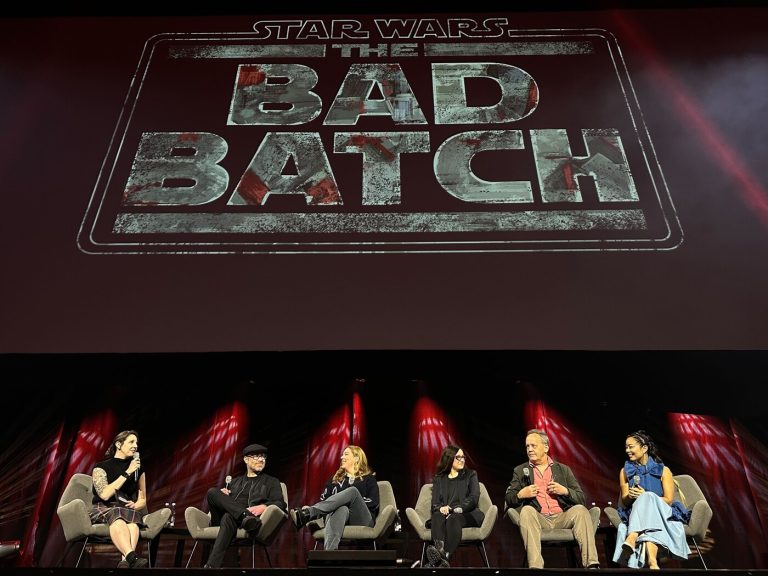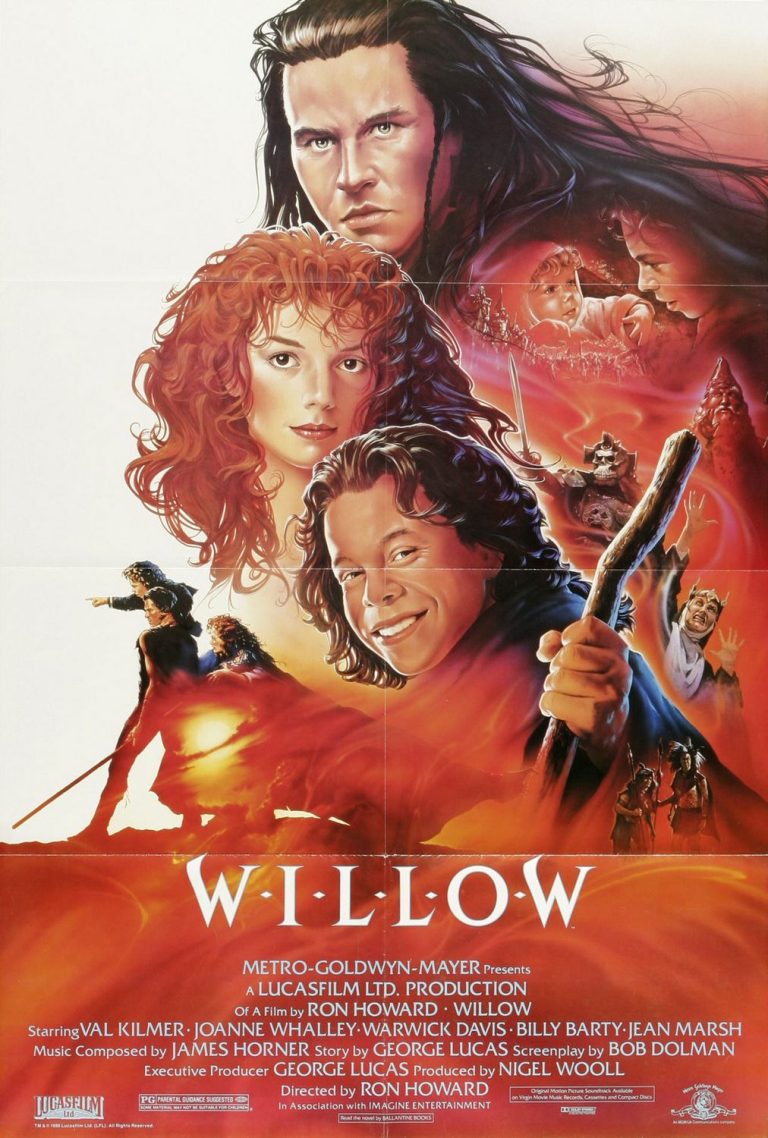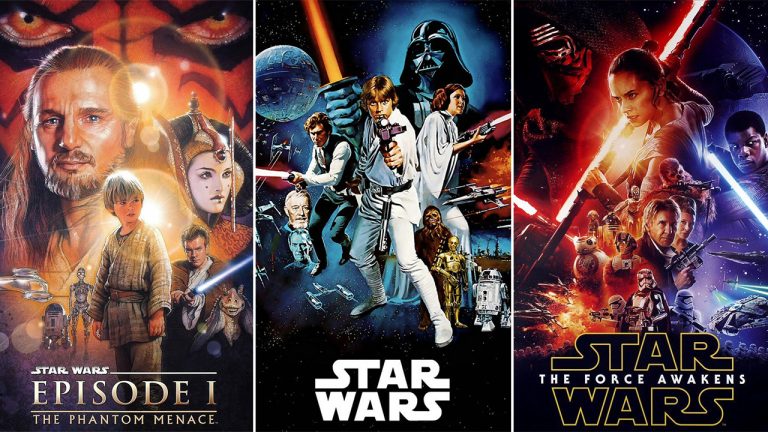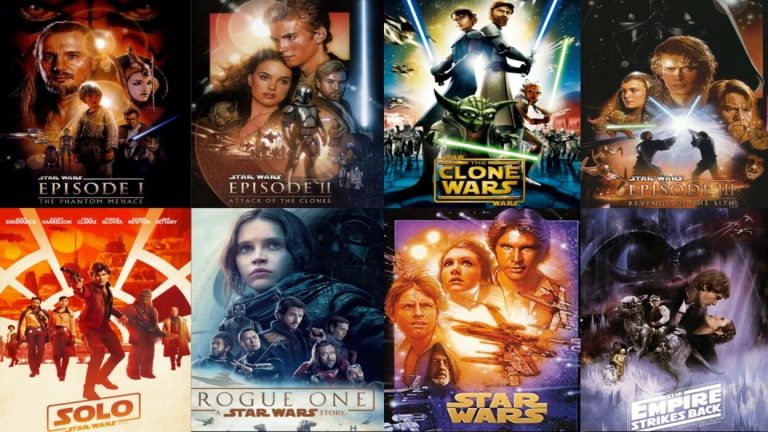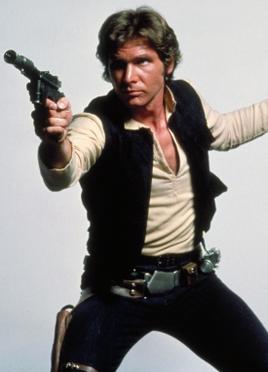What Order Should You Watch The Star Wars Movies?
So, you’re ready to embark on an epic journey through the Star Wars universe, but you’re not quite sure where to begin. Don’t worry, my friend, I’ve got you covered! In this article, we’re going to dive into the age-old question: what order should you watch the Star Wars movies? Whether you’re a die-hard fan or a newbie to the franchise, I’ll guide you through the different viewing options and help you find the perfect order to experience the galaxy far, far away.
Now, before we delve into the nitty-gritty details, let’s take a step back and appreciate the sheer magnitude of the Star Wars saga. With nine main episodic films, multiple spin-offs, animated series, and even standalone movies, the Star Wars universe can be quite daunting to navigate. But fear not! I’m here to simplify things for you and make sure you have the most enjoyable and immersive experience possible. So, grab your lightsaber and let’s dive into the thrilling world of Star Wars!

What Order Should You Watch the Star Wars Movies?
Star Wars is a beloved franchise that has captured the imagination of audiences for decades. With multiple trilogies, spin-offs, and TV shows, it can be daunting for newcomers to know where to start. In this article, we will explore the different viewing orders for the Star Wars movies and help you decide which one is right for you.
The Release Order: A Classic Approach
The release order is the most straightforward way to experience the Star Wars saga. It follows the chronological order in which the movies were originally released, starting with “Star Wars: Episode IV – A New Hope” in 1977. This order allows viewers to experience the story as it unfolded for audiences at the time.
Watching the movies in release order allows you to see the evolution of the franchise, both in terms of storytelling and visual effects. It also preserves the surprise reveals and plot twists that have become iconic moments in cinematic history. By starting with the original trilogy, you can witness the classic battle between the Rebel Alliance and the Galactic Empire and follow the journey of Luke Skywalker, Princess Leia, and Han Solo.
Benefits of the Release Order
One of the main benefits of watching the Star Wars movies in release order is that it allows you to experience the story in the same way that audiences did when the films were first released. This can create a sense of nostalgia and appreciation for the cultural impact of the franchise.
Another advantage is that the release order provides a natural progression in terms of storytelling. The original trilogy sets up the core narrative, introducing key characters and establishing the conflict between the light side and the dark side of the Force. The prequel trilogy then dives into the origins of the characters and events that shaped the galaxy. Finally, the sequel trilogy brings the story to a satisfying conclusion.
Drawbacks of the Release Order
While the release order offers a cohesive narrative experience, it does mean that viewers will have to wait until the later films to learn about the events that occurred before the original trilogy. This can lead to confusion for those unfamiliar with the Star Wars universe.
Additionally, the release order includes the widely criticized prequel trilogy, which some fans feel detracts from the overall quality of the saga. However, watching the prequels can provide a deeper understanding of the events leading up to the original trilogy and the fall of Anakin Skywalker.
The Chronological Order: A Comprehensive Journey
If you prefer a more chronological approach to storytelling, watching the Star Wars movies in chronological order may be the right choice for you. This order starts with the prequel trilogy, then moves on to the original trilogy, and finally concludes with the sequel trilogy.
By following the chronological order, you can witness the events in the Star Wars universe unfold in a linear fashion. You’ll see how Anakin Skywalker becomes Darth Vader, the rise of the Empire, the Rebel Alliance’s struggle for freedom, and the ultimate battle against the First Order.
Benefits of the Chronological Order
Watching the movies in chronological order allows you to fully grasp the complex storylines and character arcs. You’ll have a deeper understanding of the motivations and relationships between the characters as you follow their journeys from beginning to end.
Additionally, starting with the prequel trilogy provides context for the events of the original trilogy. You’ll gain insight into the rise of the Sith and the fall of Anakin Skywalker, which adds layers of depth to the story.
Drawbacks of the Chronological Order
One drawback of the chronological order is that it can spoil some of the surprise reveals and plot twists that occur in the original trilogy. For example, if you start with “Star Wars: Episode I – The Phantom Menace,” you’ll already know that Darth Vader is Luke Skywalker’s father. This may diminish the impact of certain moments.
Additionally, the chronological order can feel disjointed at times, as the prequels have a different tone and visual style compared to the original trilogy. Some viewers may find it jarring to switch between different eras of filmmaking.
Other Viewing Orders: A Personalized Approach
While the release order and chronological order are the most popular options, there are other viewing orders that cater to specific preferences. Here are a few alternative approaches:
- Machete Order: This order suggests watching the movies in a specific sequence that preserves the surprise reveals while also providing additional context. It involves starting with “Star Wars: Episode IV – A New Hope,” then jumping back to the prequel trilogy, and concluding with the original trilogy minus one movie. This order aims to enhance the viewing experience by presenting the story in a unique way.
- Stand-Alone Films: If you’re primarily interested in certain characters or storylines, you can choose to watch the stand-alone Star Wars films individually. These movies, such as “Rogue One: A Star Wars Story” and “Solo: A Star Wars Story,” can be enjoyed on their own or incorporated into the larger saga.
- TV Series Viewing Order: In addition to the movies, there are several animated TV series set in the Star Wars universe. If you want to explore the complete story, you can incorporate these series into your viewing order. Start with “Star Wars: The Clone Wars” and “Star Wars Rebels” to delve deeper into the events between the prequel and original trilogies.
Ultimately, the choice of viewing order depends on your personal preferences and how you want to experience the Star Wars saga. Whether you opt for the release order, chronological order, or an alternative approach, the most important thing is to enjoy the journey through a galaxy far, far away.
Key Takeaways: What Order Should You Watch the Star Wars Movies?
- Release order: Start with Episode IV: A New Hope, then continue with Episodes V and VI before moving on to the prequel trilogy (Episodes I, II, and III) and finally the sequel trilogy (Episodes VII, VIII, and IX).
- Chronological order: Begin with Episode I: The Phantom Menace and follow the story in numerical order, ending with Episode IX: The Rise of Skywalker.
- Machete order: Watch Episodes IV and V, then jump back to Episode II: Attack of the Clones, followed by Episodes III and VI. Skip Episode I, as it is not essential to the main story. Finish with Episodes VII, VIII, and IX.
- Clone Wars order: Incorporate the animated series “Star Wars: The Clone Wars” by watching it between Episodes II and III, adding depth to the story.
- Personal preference: Ultimately, the order in which you watch the Star Wars movies is up to you. Consider your own interests and priorities when deciding which order to follow.
Frequently Asked Questions
1. What is the recommended order to watch the Star Wars movies?
There are a few different viewing orders that fans of the Star Wars franchise recommend, depending on personal preferences and storytelling preferences. Here are the two most popular viewing orders:
The Release Order: This is the order in which the movies were originally released. Start with “Star Wars: Episode IV – A New Hope” (1977), followed by “Star Wars: Episode V – The Empire Strikes Back” (1980), “Star Wars: Episode VI – Return of the Jedi” (1983), “Star Wars: Episode I – The Phantom Menace” (1999), “Star Wars: Episode II – Attack of the Clones” (2002), “Star Wars: Episode III – Revenge of the Sith” (2005), “Star Wars: Episode VII – The Force Awakens” (2015), “Star Wars: Episode VIII – The Last Jedi” (2017), and “Star Wars: Episode IX – The Rise of Skywalker” (2019). This order allows you to experience the original trilogy first and then dive into the prequel and sequel trilogies.
The Chronological Order: This order follows the chronological timeline of the Star Wars universe. Start with “Star Wars: Episode I – The Phantom Menace” (1999), followed by “Star Wars: Episode II – Attack of the Clones” (2002), “Star Wars: Episode III – Revenge of the Sith” (2005), “Star Wars: Episode IV – A New Hope” (1977), “Star Wars: Episode V – The Empire Strikes Back” (1980), “Star Wars: Episode VI – Return of the Jedi” (1983), “Star Wars: Episode VII – The Force Awakens” (2015), “Star Wars: Episode VIII – The Last Jedi” (2017), and “Star Wars: Episode IX – The Rise of Skywalker” (2019). This order allows you to experience the story in chronological order, starting with the prequel trilogy and ending with the sequel trilogy.
2. Can I watch the Star Wars movies in any order?
Yes, you can watch the Star Wars movies in any order you prefer. While many fans recommend watching in release or chronological order, you can also choose to watch them in a different order based on your personal preferences. Some viewers enjoy watching in a non-linear order, such as starting with “The Empire Strikes Back” or watching the original trilogy first and then diving into the prequel and sequel trilogies. Ultimately, the most important thing is to enjoy the movies and the story they tell, regardless of the order you choose to watch them in.
3. Why is the release order recommended for watching the Star Wars movies?
The release order of the Star Wars movies is recommended because it allows viewers to experience the story in the same order that audiences originally experienced it. Starting with the original trilogy and then exploring the prequel and sequel trilogies allows for a natural progression of the story and reveals certain plot twists and surprises in the intended order. Additionally, watching in release order allows viewers to appreciate the advancements in special effects and filmmaking techniques as the franchise evolved over the years.
4. Is it necessary to watch the Star Wars movies in chronological order?
No, it is not necessary to watch the Star Wars movies in chronological order. While chronological order can provide a different perspective on the story and character development, the movies were not originally intended to be watched in that order. The release order allows for a more traditional storytelling experience and preserves the surprises and reveals as they were intended. However, if you are a fan who enjoys watching stories unfold in chronological order, watching the movies in that order can provide a unique viewing experience.
5. Are there any alternative viewing orders for the Star Wars movies?
Yes, there are some alternative viewing orders that fans have come up with. One popular alternative is the “Machete Order,” which suggests watching the movies in the order of “Star Wars: Episode IV – A New Hope,” “Star Wars: Episode V – The Empire Strikes Back,” “Star Wars: Episode II – Attack of the Clones,” “Star Wars: Episode III – Revenge of the Sith,” and finally “Star Wars: Episode VI – Return of the Jedi.” This order skips “The Phantom Menace” and provides a different perspective on the story. However, it is important to note that this order is not widely recommended and may not provide the same cohesive storytelling experience as the release or chronological order.
The BEST Order To Watch STAR WARS | Mashable Explains
Final Summary: The Best Order to Watch the Star Wars Movies
After diving deep into the Star Wars universe and exploring the different viewing orders available, it’s time to reveal the ultimate order to watch the Star Wars movies. While there are various ways to approach this, the most popular and widely recommended order is the “Machete Order.” This order consists of watching the movies in a way that enhances the viewing experience while preserving the element of surprise.
In the Machete Order, you start with Episode IV: A New Hope, followed by Episode V: The Empire Strikes Back. These two films introduce you to the original trilogy and the iconic characters that have captured the hearts of fans for decades. After experiencing the classic story arc, you then jump back in time to Episode II: Attack of the Clones and Episode III: Revenge of the Sith. These prequels provide valuable context and delve into the origins of the beloved characters. Finally, you conclude with Episode VI: Return of the Jedi, bringing the saga full circle.
By following the Machete Order, you get to experience the original trilogy’s epic narrative twists and turns before diving into the prequels to gain a deeper understanding of the events that unfolded. This order enhances the viewing experience by introducing key plot points at strategic moments, making it an ideal choice for both newcomers and longtime fans.
So, get ready to embark on an unforgettable journey through the Star Wars galaxy. May the Force be with you as you watch the movies in the recommended Machete Order and discover the magic and adventure that has captivated audiences for generations.

